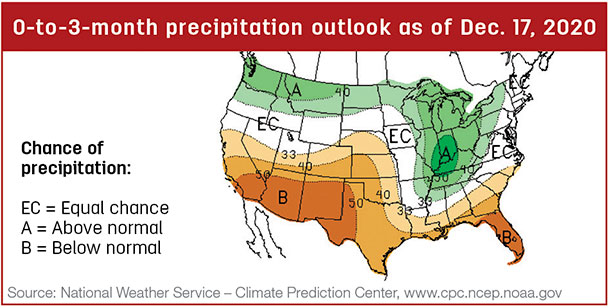Spring bull buying season is here, and when buying bulls, it is critical to evaluate what type of bull will benefit the operation most. This month will focus on bulls purchased to raise replacement heifers.
Some bulls are touted or marketed as being good producers of females, which begs the question: What makes a bull a good producer of females? The answer to this question is really what makes a good cow – and thus, is the bull likely to pass on these traits to his daughters? Opinions will likely vary some from producer to producer on what makes a good cow, but there are some key fundamentals that should be on the list of all cattle producers. These can be grouped into traits that affect weaning a profitable calf each year and longevity.
There are a lot of things that go into a cow weaning a profitable calf each year. First, the cow has to get bred as a heifer and then breed back within about 85 days of calving each year. Fertility is hard to predict, but there are some expected progeny differences (EPDs) available to help select bulls that will sire daughters with better fertility. Many major cattle breeds report heifer pregnancy EPDs, and some report other cow reproductive EPDs. These EPDs should be prioritized when selecting bulls to produce replacements.

Additionally, traits that reduce the chances of a cow or heifer being culled should be emphasized, as this affects longevity. These include Docility, Feet and Legs, Udder and Teat Structure, and Fleshing Ability, to name a few. According to heritability estimates from the American Angus Association, Docility is one of the most highly heritable traits, with a heritability estimate of 0.44. Docile cattle are easier to handle and less likely to get injured or tear up equipment. Cows with poor feet or leg structure are more likely to get culled due to lameness or reduced body condition. Foot structure and especially claw angle are often overlooked when selecting bulls; make sure to evaluate this visually on all bulls and use available EPDs.
It is critical to select bulls that will sire daughters which match your forage resources and production environment. In lower-rainfall areas, cows with low to moderate milk production are best suited.
Finally, be cautious of selecting for bulls with high levels of growth, as this can easily result in cows that are bigger than desired.







